Linux trounces Windows Mobile in smartphone shipments
Jul 19, 2005 — by Henry Kingman — from the LinuxDevices Archive — views [Updated Jul. 20, 2005] — Embedded Linux powered 14 percent of smartphones shipped worldwide in Q1 of 2005, up 412 percent from 3.4 percent in Q1-04, according to Gartner. Windows Mobile Smartphone shipments also grew, rising 50 percent from a 2.9 share in 1Q-04 to 4.5 percent in 1Q-05.
[Updated Jul. 20, 2005] — Embedded Linux powered 14 percent of smartphones shipped worldwide in Q1 of 2005, up 412 percent from 3.4 percent in Q1-04, according to Gartner. Windows Mobile Smartphone shipments also grew, rising 50 percent from a 2.9 share in 1Q-04 to 4.5 percent in 1Q-05.
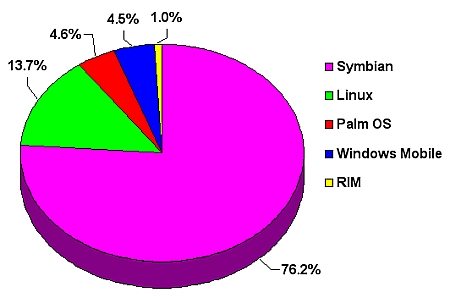
First quarter smartphone shipments, by OS. Source: Gartner
Additionally, Gartner says smartphones comprise the fastest-growing portion of the “mobile terminal” market, with sales expected to double year-over-year in 2006, reaching 200 million by 2008. While some OSes lost market share, every smartphone OS grew in total shipments, according to Roberta Cozza, a principal analyst at Gartner. “Smartphone sales broke all records in the first quarter of 2005, and we expect them to double year on year to 2006,” Cozza said.
According to Gartner, worldwide mobile terminal sales reached 180 million units in 1Q-05, a first-quarter record, and will exceed 1 billion units annually by 2009 (see chart, below). Nokia, Motorola, and Samsung all increased their market shares compared with the same period in 2004. Siemens, the world's tenth-largest company, meanwhile conceded two percentage points.
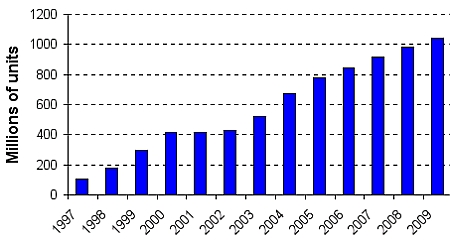
Unit shipments of “mobile terminals.” Source: Gartner
Of the 180 million mobile terminals shipped in 1Q-05, Gartner says 8.4 million were “smartphones” — devices with complex operating systems such as Linux, Symbian, Palm OS, or Windows Mobile. The chart below shows smartphone shipments by OS.
| Operating System | 1Q05 Shipments |
1Q05 Market Share % |
|
| Symbian | 6,410,968 | 76.2% | |
| Linux | 1,156,740 | 13.7% | |
| Palm OS | 387,775 | 4.6% | |
| Windows Mobile for Smartphones | 381,547 | 4.5% | |
| RIM | 80,000 | 1.0% | |
| TOTAL | 8,417,030 | 100% | |
One slightly misleading factor is that Gartner apparently does not include Windows Mobile “Pocket PC Phones” in the smartphone data. Thus, relative market shares of Linux and Windows may actually be closer than the Gartner data suggest.
Big in Japan
According to Cozza, Linux's dramatic marketshare explosion “was helped by strong sales into the Japanese market.”
The Japanese phone market is probably the world's most advanced, with users already using their phones as electronic wallets, secure entry devices, WiFi VoIP terminals, and gaming platforms. The most visible promoter of Linux smartphones in Japan recently has been NTT DoCoMo.
DoCoMo is Japan's mobile phone leader, and by some metrics the world's largest mobile phone company. However, the company fell behind initially in the Japanese 3G market, due to bulky handsets with poor battery life. The company announced in December of 2003 that it would switch to Linux, an OS it felt would enable sleeker, more appealing, functional, and cost-effective terminals for its FOMA (“freedom of mobile information everywhere”) 3G services.
Less than a year later, DoCoMo partners NEC and Panasonic unveiled three Linux smartphones, including one model with integrated WiFi and VoIP capabilities. The phones are all powered by MontaVista Linux, and DoCoMo a month later bought a $3M equity stake in MontaVista, a privately held Linux system house founded in 1999 by embedded computing pioneer James Ready.
MontaVista has focused intensely on phones this spring, rolling out its Mobilinux phone stack and partner ecosystem, along with a real-time Linux project aimed at enabling Linux to control both signal and application planes in single-chipset mobile phone designs aimed at the higher-volume feature-phone market. MontaVista so far has at least ten Linux mobile phone design wins.
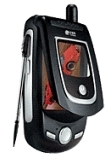







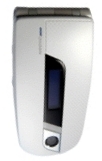


Some MontaVista Linux mobile phone design wins
Left to right: Motorola A768, E680i, E680, A760, A780, E895; NEC N901iC, N700i, N900il; Panasonic P700i, P901i
(Click each image for further details)
 Another Linux application stack and tools vendor, Trolltech, said in February its Qtopia Phone Edition (QPE) would ship in 20 new phones this year. Trolltech opened a Beijing office in May, in part to support six QPE customers there. One QPE customer, ZTE, last month revealed its e3 cameraphone (shown at right) with pivoting touchscreen.
Another Linux application stack and tools vendor, Trolltech, said in February its Qtopia Phone Edition (QPE) would ship in 20 new phones this year. Trolltech opened a Beijing office in May, in part to support six QPE customers there. One QPE customer, ZTE, last month revealed its e3 cameraphone (shown at right) with pivoting touchscreen.
Asia is not the only continent shipping new Linux smartphone designs. ROAD (Remote Office Access Devices) in February shipped the first true clamshell Linux phone we've seen, the S101.
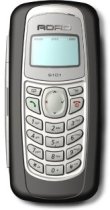
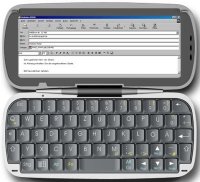
ROAD's S101 multifunction phone/PDA in phone mode and PDA mode
(Click each image to enlarge)
Another coup for Linux in mobile phones came last month, when world number two mobile phone chipset vendor Qualcomm added Linux as its first-ever supported third-party OS. Meanwhile, a big Linux phone OS contract from Korean electronics giant LG appears to have given PDA OS specialist PalmSource a new lease on life.
For everything you always wanted to know about Linux smartphones (and more), visit the Linux Mobile Phones Showcase. And, don't miss our Hot Topic Guide, Linux on a roll in mobile phones.
More information about the mobile terminal and smartphone markets can be found in Gartner's May report entitled Market Share: Mobile Terminals, Worldwide, 1Q05, and in its report, dated today, entitled: Forecast: Mobile Terminals, Worldwide, 2000-2009.
This article was originally published on LinuxDevices.com and has been donated to the open source community by QuinStreet Inc. Please visit LinuxToday.com for up-to-date news and articles about Linux and open source.